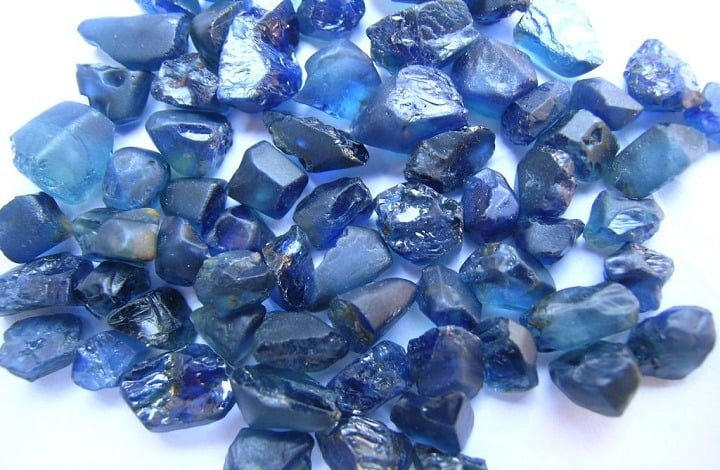Sapphire is the most precious and valuable blue gemstone. It is a very desirable gemstone due to its excellent color, hardness, durability, and luster. In the gem trade, Sapphire without any color prefix refers to the blue variety of the mineral Corundum. However, the term Sapphire encompasses all other gem varieties and colors of Corundum as well, excluding Ruby, the red variety of Corundum, which has its own name since antiquity.
The most valuable color of Sapphire is a cornflower blue color, known as Kashmir Sapphire or Cornflower Blue Sapphire. Another extremely valuable Sapphire form is the very rare, orange-pink Padparadscha. It is found that an exotic type of sapphire, known as Color Changing Sapphire, displays a different color depending on its lighting. The most soughed Sapphire, Color Changing Sapphire is blue, but in artificial light, it is violet. (This effect is the same phenomenon well-known in the gemstone Alexandrite). In recent year, Yellow and pink Sapphire has recently become very popular, and are now often seen in jewelry.
In the previous era, Sapphires (excluding blue) were often called the same name as a popular gemstone of that color with the prefix “oriental” added to it. For example, green Sapphire was called “Oriental Emerald”. The practice of naming different gemstone to identify the sapphire was also once called as “Oriental Emerald” is now called “Green Sapphire”. The same is also true for all other color or varieties of Sapphire. But the word “Sapphire” in its simple context refers only to the blue sapphire unless a prefix is specified.
Sapphire often contains minor inclusions of tiny slender Rutile needles. The presences of these inclusions decrease the transparency of stone and are known as silk. In the dense context, parallel groupings, these inclusions can actually enhance by allowing polished Sapphires to exhibit asterism. Sapphire displays asterism known as “Star Sapphire” gems displaying asterism are known as “Star Sapphire”, and these can be highly prized. Star Sapphire exists in six ray stars, though twelve ray stars are also known.
Sapphire is the birthstone of September. The name Sapphire has been derived from the Latin word meaning “saphirus” and the Greek word “sapheiros”, both mean blue. There is a different belief that that the name sapphire has been associated with the planet Saturn.
Physical Properties and Science of Sapphire
The sapphire belongs to the variety of corundum, an aluminum oxide with presence of trigonal crystal structure in the same family as Ruby. The only difference between the two is in the color of the gemstone, which comes in many colors, the most well known being blue. A sapphire’s are available in many colors, the most well known being blue. Because sapphires are available in many colors, they are considered the most versatile gemstone till now. Rubies and Sapphires are said to be priced just under the diamonds because of their hardness. Diamonds are listed in top ten due to hardness, sapphire as nine
Sapphires are also found in other colors such as dark gray, pink, green, and black, which tends to be the relatively cheaper one. The different colored varieties of sapphires are called as “fancy sapphires” and are less expensive in compared to blue one. The lotus color sapphire is called as “Padparadscha”, meaning Lotus color. It is the only single color of sapphire besides ruby gemstone.

